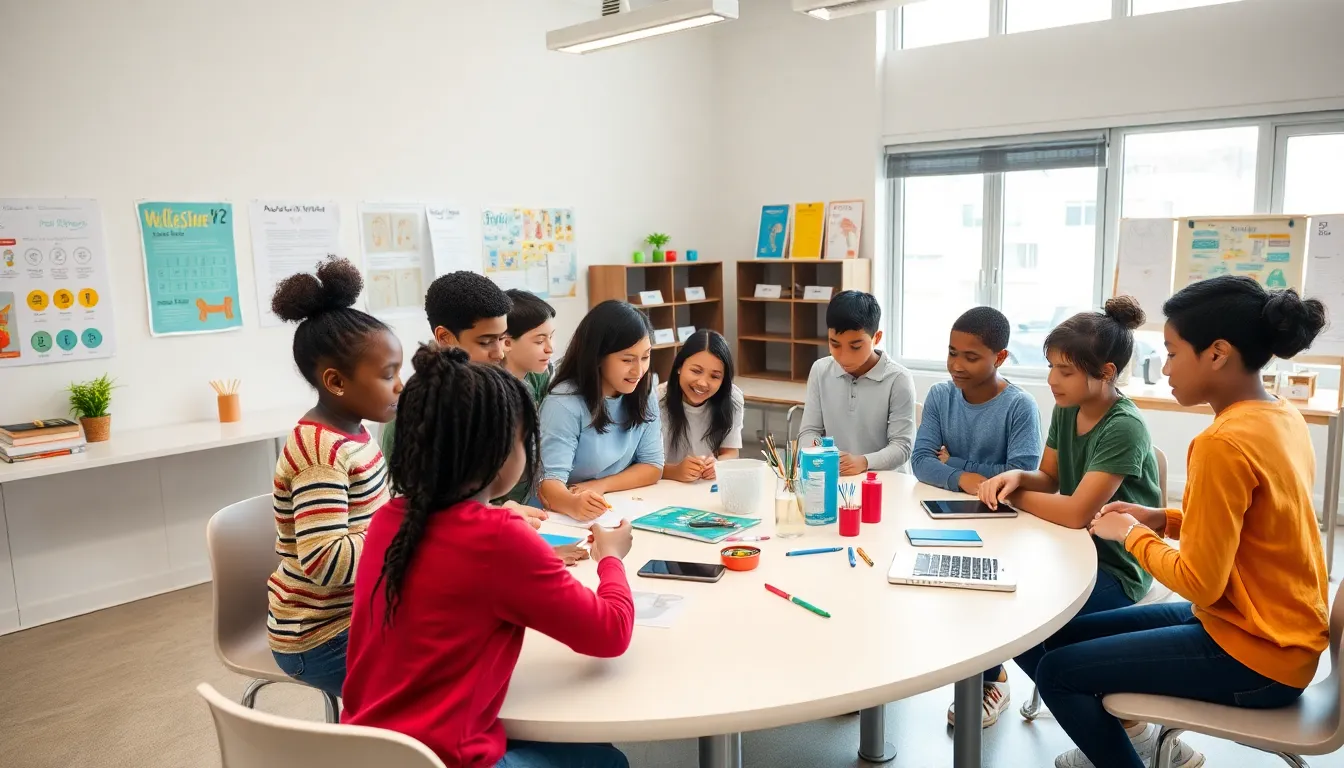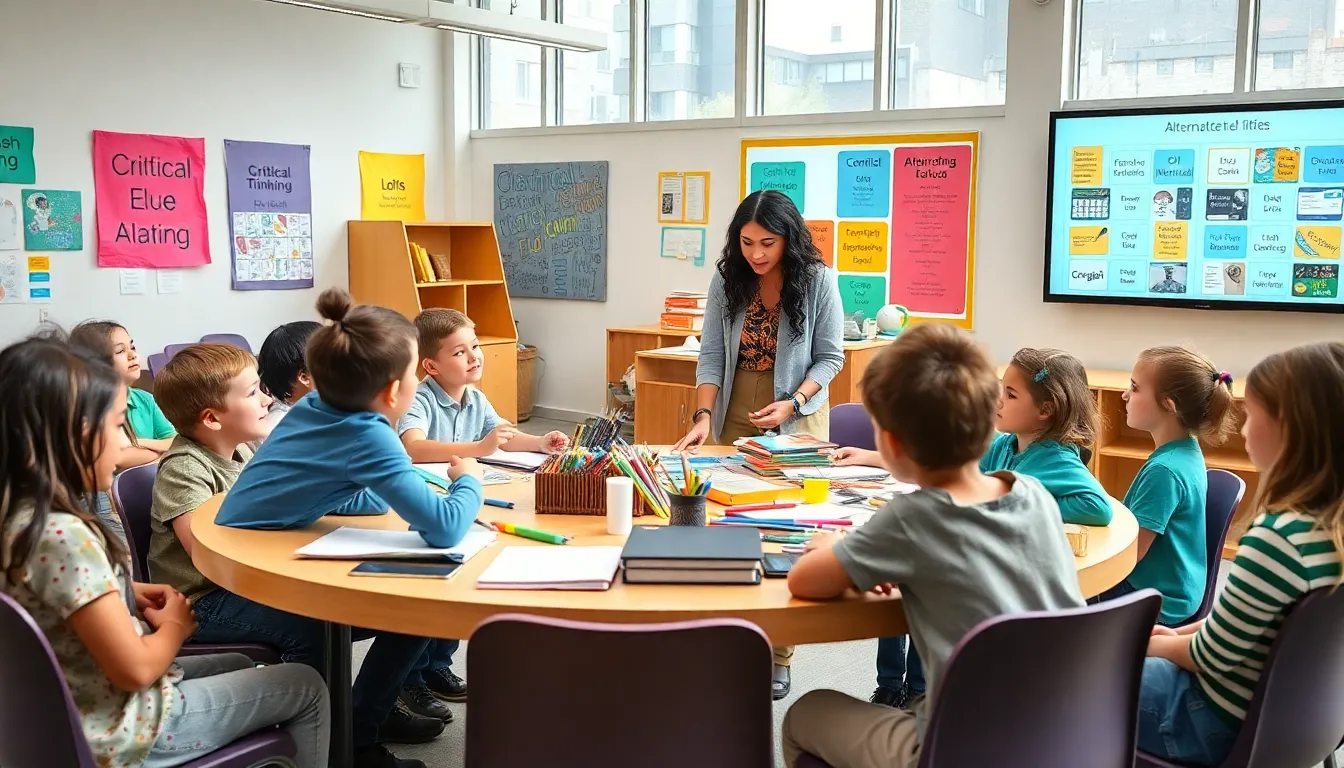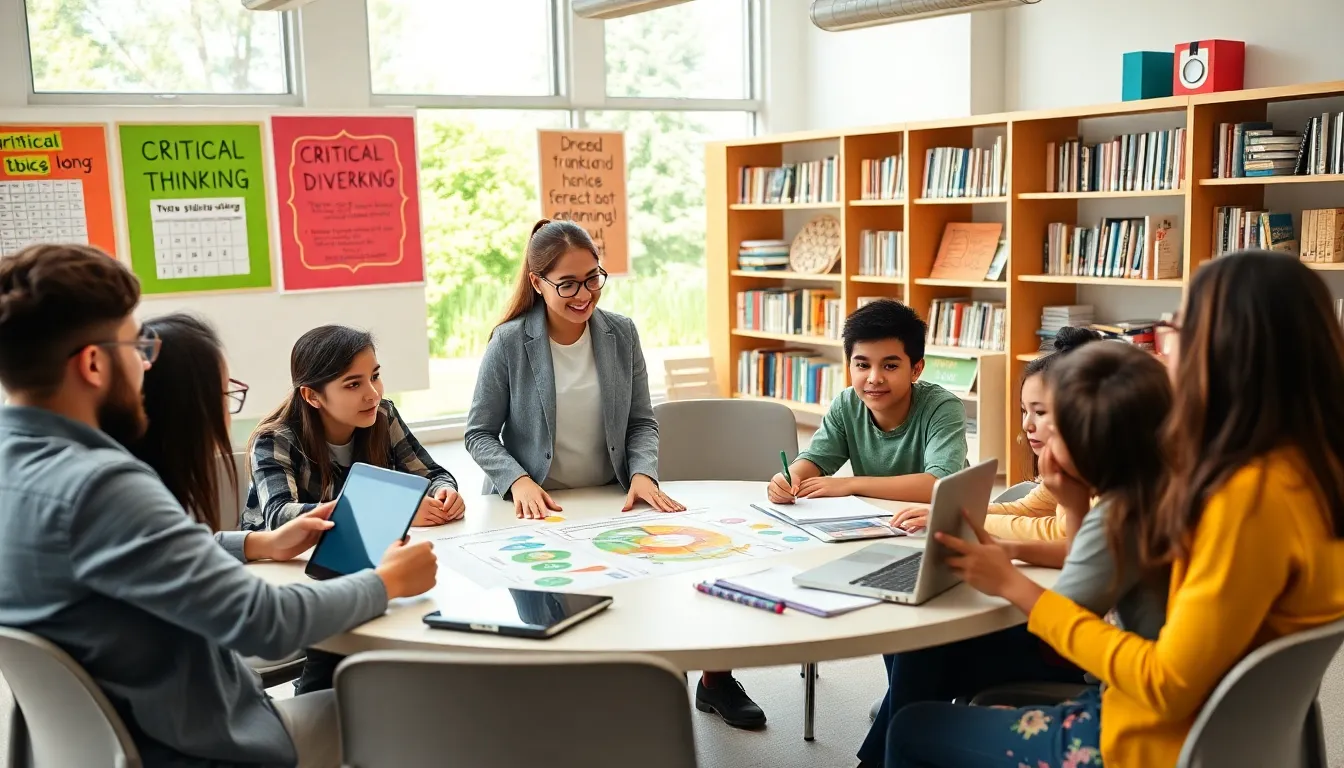If you thought the school experience was all about sitting in a classroom, listening to a teacher drone on and on, you might want to hold onto your pencil. Alternative education programs shake up the conventional way of learning, offering unique pathways for students who might not thrive in traditional settings. They’re like a refreshing lemonade on a hot summer day, sweet, tangy, and full of surprises. From Montessori to online learning environments, these programs weave a tapestry of educational experiences, tailored to individual needs. So, ready your backpack as we jump into the world of alternative education.
Table of Contents
ToggleUnderstanding Alternative Education

The Historical Context of Alternative Education
Alternative education isn’t a concept that sprang up overnight. It has deep roots, tracing back to the early 20th century when educators began questioning the rigidity of traditional schooling. Figures like Maria Montessori and Rudolf Steiner pioneered their respective educational philosophies, focusing on the holistic development of children rather than mere rote memorization. Over the decades, this movement gained momentum, expanding into various forms where personalized learning rose to prominence. Today’s alternative education programs are a testament to that evolution, ensuring students have options that suit their unique learning styles.
Key Features of Alternative Education Programs
What makes alternative education so unique? First off, these programs emphasize individualized instruction and often take a more student-centered approach. Here, students are not just passive recipients of knowledge: they engage actively in their own learning. Key characteristics include diverse curricula that could integrate arts, hands-on projects, and community engagement. Besides, smaller class sizes are common, allowing for more meaningful interactions between educators and students. It’s a world where creativity meets critical thinking, perfect for young minds eager to explore their potential.
Types of Alternative Education Programs
Montessori and Waldorf Schools
Montessori and Waldorf schools often top the list. Both approaches prioritize experiential learning, but their methods diverge significantly. Montessori education encourages independence, allowing students to choose from a range of activities. On the other hand, Waldorf schools focus on a developmental approach, integrating storytelling and artistic expression into every subject. These frameworks brew a rich environment where children learn at their own pace while engaging with diverse disciplines, turning education into an adventure.
Charter Schools and Magnet Schools
Charter schools and magnet schools present yet another flavor of alternative education. Charter schools operate independently of district schools and often specialize in specific themes, from arts to science. They foster innovation in teaching methods and curricula, making education feel more relevant and connected to real-world issues. Magnet schools, meanwhile, attract students from various backgrounds, providing specialized programs aimed at drawing out specific talents. Here, the focus is clear: cultivating skills and interests rather than adhering strictly to district guidelines.
Online and Hybrid Learning Environments
As technology takes center stage in education, online and hybrid learning programs have gained immense popularity. These platforms offer flexibility, allowing students to learn at their own pace. Online programs, fully digital, cater to various learning styles, enabling learners to access vast resources from anywhere. Hybrid models combine in-person and online instruction, providing a balanced approach that meets the needs of students craving both connectivity and independence. They ensure that education isn’t one-size-fits-all.
Benefits of Alternative Education Programs
Personalized Learning Experiences
One of the standout benefits of alternative education is the personalized learning experience. Unlike traditional classrooms, where the focus is often on standardized tests and one-size-fits-all approaches, alternative programs adapt to the learner’s needs. This means students receive tailored instruction and support that aligns with their strengths and weaknesses. It’s an invaluable opportunity for growth, fostering a love for learning along the way.
Flexibility and Adaptability
Flexibility is another significant advantage. Many alternative programs allow students to craft their own learning schedule, incorporating breaks and varying lesson times according to their personal peak performance hours. This adaptability helps to cater to the individual learning styles of students, accommodating those who might struggle under rigid time constraints.
Focus on Life Skills and Critical Thinking
Alternative education programs prioritize critical thinking and problem-solving, essential skills for navigating the complexities of modern life. Instead of emphasizing mere retention of facts, these programs encourage students to engage deeply with the material. They focus on real-world applications, promoting skills such as teamwork and communication. This emphasis on life skills prepares students not just for academic success, but for success in the world beyond the classroom.
Challenges Faced by Alternative Education Programs
Funding and Resource Allocation
Even though their benefits, alternative education programs face significant challenges. Funding can often be a tricky affair. Many programs rely on grants and community support, which can fluctuate with economic conditions. Limited resources may result in constraints that impede their ability to provide high-quality learning experiences. Ensuring consistent funding is crucial for sustaining innovation and growth.
Public Perception and Legitimacy Issues
Public perception also plays a role in the challenges faced by these programs. Some people view alternative education skeptically, questioning its effectiveness compared to traditional models. This skepticism can hinder enrollment and support, making it essential for alternative programs to demonstrate their value through tangible success stories and improved outcomes.
Student Outcomes and Accountability
Finally, ensuring student outcomes remains a pressing concern. With many alternative education programs not adhering to the same standardized testing measures as traditional schools, accountability can be difficult to gauge. It’s vital for these programs to establish clear metrics for evaluating success, assuring parents and the broader community that they maintain a rigorous and effective educational standard.
Future Trends in Alternative Education
Integration with Traditional Education Systems
Looking ahead, integrating alternative education with traditional education systems may be a significant trend. As more educators recognize the benefits of diverse teaching methods, collaborations might emerge, bridging the gap between the two worlds. Imagine a classroom where students can switch between different learning models seamlessly. This fusion could lead to a more inclusive educational landscape, catering to various needs and preferences.
Technological Advancements and Their Impact
On the tech front, advancements will undoubtedly continue shaping alternative education. Innovations such as artificial intelligence and virtual reality could revolutionize how students engage with the curriculum. These technologies promise to create immersive learning experiences, breaking down geographical barriers and providing access to quality education for all students, regardless of their background.



